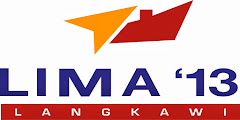Many countries have long maintained rapid deployment forces (RDFs) in the form of airborne, air assault, commando, marine or light infantry type units that can be swiftly despatched to potential trouble spots. These units have, however, often lacked organic firepower and have been outgunned by their potential enemy.
As a solution many countries are procuring new weapon systems with increased capability to provide firepower for their rapid deployment units.
These include towed and self-propelled (SP) conventional artillery systems as well as mortars and artillery rocket systems.
Weapon systems are just one element of RDF firepower. Other key components, which fall outside the remit of this briefing, include the essential ammunition (projectile, charge and fuze), ammunition resupply vehicles, target acquisition and fire control, and overall command and control.

LG-105 of the Indonesian Marine Corps (photo : Bronco1978-Kaskus Militer)
While some countries are procuring new artillery platforms, others are placing greater emphasis on the development and procurement of new ammunition with increased range, lethality and accuracy. Improved accuracy requires fewer rounds to be fired to neutralise a given target and means a significant reduction in logistics.
Towed Artillery System
There is still a market for towed systems, which are much lighter than their SP counterparts and are therefore more easily transported by air, especially tactical transport aircraft and helicopters.
The two most widely used 105 mm towed artillery systems are the Italian Oto Melara 105 mm Model 56 Pack Howitzer (PH) and the BAE Systems Land Systems (Weapons & Vehicles) 105 mm Light Gun.
Rapidly making inroads into the 105 mm market is the Giat Industries 105 mm LG1 Light Gun. It has now been sold to at least five export customers - no mean achievement considering that the French Army has not adopted the system.
The original 105 mm LG1 Mk 1 is in service with Singapore, while the latest Mk II is used by Belgium (14), Canada (28), Indonesia (20) and Thailand (24). When firing the old US M1 high explosive (HE) projectile, it has a maximum range of 11.4 km, while when firing the Giat-developed 105 mm HE Base Bleed (BB) round, it reaches a maximum range of 18.5 km.
Giat Industries is currently developing the weapon further. The Mk III has an inertial 3-D aiming and positioning system and muzzle velocity radar. The projected Mk IV would have all the features of the Mk III, as well as automatic loading. It would also be possible to install the upper part of the LG1 Mk II onto the rear of a light tactical vehicle.
The Oto Melara 105 mm Model 56 PH was developed more than 50 years ago to meet the requirements of the Italian Army. Well over 2,500 have been built and sold to more than 30 countries. Production is undertaken on an as-required basis, with recent customers including Brazil.
Towed Artillery System
There is still a market for towed systems, which are much lighter than their SP counterparts and are therefore more easily transported by air, especially tactical transport aircraft and helicopters.
The two most widely used 105 mm towed artillery systems are the Italian Oto Melara 105 mm Model 56 Pack Howitzer (PH) and the BAE Systems Land Systems (Weapons & Vehicles) 105 mm Light Gun.
Rapidly making inroads into the 105 mm market is the Giat Industries 105 mm LG1 Light Gun. It has now been sold to at least five export customers - no mean achievement considering that the French Army has not adopted the system.
The original 105 mm LG1 Mk 1 is in service with Singapore, while the latest Mk II is used by Belgium (14), Canada (28), Indonesia (20) and Thailand (24). When firing the old US M1 high explosive (HE) projectile, it has a maximum range of 11.4 km, while when firing the Giat-developed 105 mm HE Base Bleed (BB) round, it reaches a maximum range of 18.5 km.
Giat Industries is currently developing the weapon further. The Mk III has an inertial 3-D aiming and positioning system and muzzle velocity radar. The projected Mk IV would have all the features of the Mk III, as well as automatic loading. It would also be possible to install the upper part of the LG1 Mk II onto the rear of a light tactical vehicle.
The Oto Melara 105 mm Model 56 PH was developed more than 50 years ago to meet the requirements of the Italian Army. Well over 2,500 have been built and sold to more than 30 countries. Production is undertaken on an as-required basis, with recent customers including Brazil.
 LG-105 of the Singapore Army (photo : Militaryphotos)
LG-105 of the Singapore Army (photo : Militaryphotos)While the weapon has a maximum range of only 10.575 km, it can be used in the field or with the road wheels underslung as an anti-tank weapon. Its main advantage is that it can be disassembled into 11 subassemblies of which the heaviest weighs 122 kg, while its low weight of 1,290 kg enables it to be carried under almost all deployed helicopters.
China North Industries Corporation markets a copy of the Oto Melara 105 mm Model 56 PH, but there are no known export sales.
Russia developed the 82 mm Vasilyek 2B9 automatic mortar to meet the requirements of the Russian Army. It was subsequently exported to a number of countries and production is also undertaken in Hungary.
With its low weight and high-rate fire the system is well suited to airborne and other units. It saw combat use in Afghanistan, where some were installed on MTLB multirole armoured chassis for increased mobility. The US Army has installed the Vasilyek on the rear of an AM General Humvee chassis for trials purposes and this is called the Scorpion.
Denel of South Africa is well known for its 155 mm G5 towed and G6 SP artillery systems, but for some years the company has been working on its own initiative on the 105 mm Light Experimental Ordnance (LEO).
The first LEO ballistic testbed was fired in 1997 and the first weapon was completed in 2001. This weighs 3,800 kg, but Denel's long-term aim is to reduce the weight to 2,500 kg using advanced materials.
LEO has a 105 mm/57 cal ordnance fitted with a newly designed muzzle brake. Firing locally developed ammunition it has a maximum range of 24 km, which can be increased to 30 km using BB ammunition.
Denel claims that, as well as having a significantly greater range than existing 105 mm towed artillery systems, the 105 mm ammunition developed for LEO is also much more lethal.
The company says that the 105 mm HE Preformed Fragmented Projectile has a lethal area equal to that of the locally produced 155 mm extended-range full-bore projectile and double that of the widely deployed 155 mm US-developed M107 HE projectile.
While there are many 155 mm towed artillery systems worldwide, almost all of them are too heavy for use by RDFs.
In the late 1980s the then Vickers Shipbuilding and Engineering Limited started work on a 155 mm/39 cal lightweight howitzer as a private venture. One of the key objectives was that the system would have the same ballistic characteristics as the US 155 mm towed M198 (which weighs 7,163 kg) but would be much lighter, with a target weight of no more than 4,000 kg in its baseline form.
Following a competition, this was adopted by the US under the designation M777, which is now in low-rate initial production (LRIP). Under LRIP a total of 94 M777s are being assembled at the BAE Systems Land Systems facility in Hattiesburg, Mississippi; all are due to be delivered by April 2006.
Earlier in 2005 the go-ahead was given for full-rate production of the M777A1. The company was awarded a contract worth $834 million to supply 495 weapons over a four-year period starting in July 2006 and running up to October 2009. The US Army is expected to take delivery of 233 systems and the Marine Corps 262. The US Marine Corps LRIP M777 will also be designated the M777A1.
Installation of the General Dynamics Towed Artillery Digitisation/Digital Fire-Control System on the weapons will enable them to fire the Raytheon Excalibur precision-guided munition to a range of 40 km with an accuracy of within 10 m.
For trials purposes the M777 has already been fitted with the Selex Sensors and Airborne Systems Automatic Pointing System (APS) and the ordnance is used for the United Defense 155 mm Non-Line-of-Sight Cannon (NLOS-C) concept demonstrator.
The prototype of a Tilt Bed Carrier was completed several years ago and studies have been made to integrate the 155 mm/39 cal ordnance on various tracked and wheeled SP chassis.
The BAE Systems Land Systems (Weapons & Vehicles) 105 mm Light Gun continues to be marketed in two versions: the standard L118 used by the British Army and the L119 used by some export customers. The difference between the two is the barrel.
China North Industries Corporation markets a copy of the Oto Melara 105 mm Model 56 PH, but there are no known export sales.
Russia developed the 82 mm Vasilyek 2B9 automatic mortar to meet the requirements of the Russian Army. It was subsequently exported to a number of countries and production is also undertaken in Hungary.
With its low weight and high-rate fire the system is well suited to airborne and other units. It saw combat use in Afghanistan, where some were installed on MTLB multirole armoured chassis for increased mobility. The US Army has installed the Vasilyek on the rear of an AM General Humvee chassis for trials purposes and this is called the Scorpion.
Denel of South Africa is well known for its 155 mm G5 towed and G6 SP artillery systems, but for some years the company has been working on its own initiative on the 105 mm Light Experimental Ordnance (LEO).
The first LEO ballistic testbed was fired in 1997 and the first weapon was completed in 2001. This weighs 3,800 kg, but Denel's long-term aim is to reduce the weight to 2,500 kg using advanced materials.
LEO has a 105 mm/57 cal ordnance fitted with a newly designed muzzle brake. Firing locally developed ammunition it has a maximum range of 24 km, which can be increased to 30 km using BB ammunition.
Denel claims that, as well as having a significantly greater range than existing 105 mm towed artillery systems, the 105 mm ammunition developed for LEO is also much more lethal.
The company says that the 105 mm HE Preformed Fragmented Projectile has a lethal area equal to that of the locally produced 155 mm extended-range full-bore projectile and double that of the widely deployed 155 mm US-developed M107 HE projectile.
While there are many 155 mm towed artillery systems worldwide, almost all of them are too heavy for use by RDFs.
In the late 1980s the then Vickers Shipbuilding and Engineering Limited started work on a 155 mm/39 cal lightweight howitzer as a private venture. One of the key objectives was that the system would have the same ballistic characteristics as the US 155 mm towed M198 (which weighs 7,163 kg) but would be much lighter, with a target weight of no more than 4,000 kg in its baseline form.
Following a competition, this was adopted by the US under the designation M777, which is now in low-rate initial production (LRIP). Under LRIP a total of 94 M777s are being assembled at the BAE Systems Land Systems facility in Hattiesburg, Mississippi; all are due to be delivered by April 2006.
Earlier in 2005 the go-ahead was given for full-rate production of the M777A1. The company was awarded a contract worth $834 million to supply 495 weapons over a four-year period starting in July 2006 and running up to October 2009. The US Army is expected to take delivery of 233 systems and the Marine Corps 262. The US Marine Corps LRIP M777 will also be designated the M777A1.
Installation of the General Dynamics Towed Artillery Digitisation/Digital Fire-Control System on the weapons will enable them to fire the Raytheon Excalibur precision-guided munition to a range of 40 km with an accuracy of within 10 m.
For trials purposes the M777 has already been fitted with the Selex Sensors and Airborne Systems Automatic Pointing System (APS) and the ordnance is used for the United Defense 155 mm Non-Line-of-Sight Cannon (NLOS-C) concept demonstrator.
The prototype of a Tilt Bed Carrier was completed several years ago and studies have been made to integrate the 155 mm/39 cal ordnance on various tracked and wheeled SP chassis.
The BAE Systems Land Systems (Weapons & Vehicles) 105 mm Light Gun continues to be marketed in two versions: the standard L118 used by the British Army and the L119 used by some export customers. The difference between the two is the barrel.
 L-119 light howitzer used by Australia and Thailand (photo : Militaryphotos)
L-119 light howitzer used by Australia and Thailand (photo : Militaryphotos)The 105 mm L119 has a maximum range of 14.3 km firing standard HE M1 ammunition and 19 km firing assisted ammunition. Some countries use the L118 model for training and fit the barrel of the L119 for combat.
Earlier in 2005 BAE Systems Land Systems (Munitions & Ordnance) was awarded a £17 million ($31 million) contract for a 105 mm improved ammunition for the L118, which will be of the insensitive munitions type.
Well over 1,100 105 mm Light Guns have been manufactured for more than 20 countries with local production undertaken in Australia and the US. The latest customer is Thailand, which has placed an initial contract for 24 L119 weapons with additional orders expected in the future.
The US Army is the largest user of the 105 mm L119 with over 400 weapons in service under the designation M119A1. It has a requirement for another 111 for active units and 164 for reserve components.
According to BAE Systems, the 105 mm Light Gun is undergoing mid-life upgrades, which will be available as a retrofit to existing systems. All British Army 105 mm Light Guns have been fitted with the APS, or Laser Inertial Artillery Pointing System (LINAPS) as it is called by Selex Sensors and Airborne Systems. This reduces into-action time as well as improving accuracy. LINAPS will also be fitted to the first batch of Thai L119 weapons.
The US Army and US Marine Corps are to replace their 155 mm M198s with the M777/M777A1 system. The M119A1 will remain in service; the long-term replacement is the projected Enhanced Forcible Entry Cannon.
Continue ………….
(Jane’s)
Earlier in 2005 BAE Systems Land Systems (Munitions & Ordnance) was awarded a £17 million ($31 million) contract for a 105 mm improved ammunition for the L118, which will be of the insensitive munitions type.
Well over 1,100 105 mm Light Guns have been manufactured for more than 20 countries with local production undertaken in Australia and the US. The latest customer is Thailand, which has placed an initial contract for 24 L119 weapons with additional orders expected in the future.
The US Army is the largest user of the 105 mm L119 with over 400 weapons in service under the designation M119A1. It has a requirement for another 111 for active units and 164 for reserve components.
According to BAE Systems, the 105 mm Light Gun is undergoing mid-life upgrades, which will be available as a retrofit to existing systems. All British Army 105 mm Light Guns have been fitted with the APS, or Laser Inertial Artillery Pointing System (LINAPS) as it is called by Selex Sensors and Airborne Systems. This reduces into-action time as well as improving accuracy. LINAPS will also be fitted to the first batch of Thai L119 weapons.
The US Army and US Marine Corps are to replace their 155 mm M198s with the M777/M777A1 system. The M119A1 will remain in service; the long-term replacement is the projected Enhanced Forcible Entry Cannon.
Continue ………….
(Jane’s)










Tidak ada komentar:
Posting Komentar